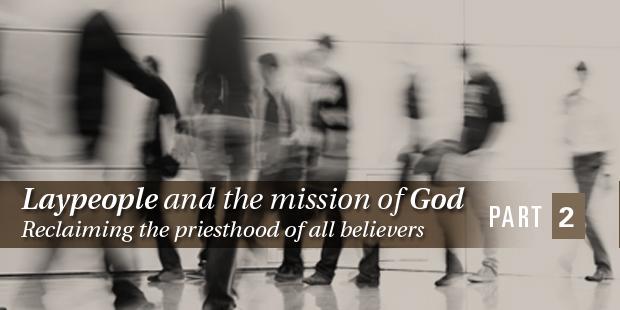
As another summer Olympics came and went, there were rumblings about this year’s U.S. men’s basketball team being the best ever. To all such Lakers shooting guards we say, we’re gonna let you finish but the Dream Team was the greatest basketball team ever assembled. The 1992 team’s roster reads like a list of the greatest NBA players ever: Michael Jordan, Larry Bird, Magic Johnson, Patrick Ewing, Karl Malone, Charles Barkley. The Dreams won every game by an average of 40 points on their way to gold. So sorry, Kobe; there will only ever be one true Dream Team.
What we can learn from them: A practice game loss to a group of college players reminded the Olympians (and us) that motivation and hustle can overcome talent any time.
Sherlock Holmes and Dr. Watson:

It’s been 85 years since the last work was published and this crime-solving duo remains one of the most popular literary teams ever. Sure, Holmes was the best crime-solver ever, but it was the way he solved them that made him great. Never seeking recognition for his genius, quietly thwarting horrible crimes or saving entire governments, almost none of London’s other inhabitants knew the man at 221B Baker Street was one of the greatest minds the world has ever seen. Without Watson tagging along and documenting his cases, we never would have known it either.
What we can learn from them: There is no such thing as a self-made man.
Rogers and Hammerstein:

Name your favorite musical; odds are these guys wrote it. The coming-together of these two musical virtuosos resulted in a 16-year partnership that produced instant classics like Oklahoma!, State Fair,South Pacific, The King and I, and The Sound of Music. For their work, they received a staggering 34 Tonys, 15 Academy Awards, two Grammys, and a Pulitzer Prize. They were recently named to a list of top-earning deceased celebrities, proving America’s love of their work has not faded in the half a century since their last collaboration.
What we can learn from them: Rogers and Hammerstein perfected their team dynamic: each had an extraordinary talent to which the other deferred. As Hammerstein once said, “I hand him a lyric and get out of his way.”
SEAL Team Six:

This is the only team on our list whose ranks are regularly changing, as old members leave and new ones join. It’s also the only team that doesn’t officially exist. The black operatives in this super-secret group (which is formally called the United States Naval Special Warfare Development Group) can swim hundreds of feet with their hands and feet bound and are trained to withstand arctic temperatures and tear gas. As one author put it, the SEALs are the Navy’s elite, and Team Six are the SEALs’ elite. On May 2, 2011, the team cemented their spot as some of the greatest soldiers in history by killing America’s Public Enemy Number One, Osama bin Laden.
What we can learn from them: They’re living testaments to what the human body can do.
The Beatles:

It’s so cliche to call The Beatles the best band ever. It’s also quite true. The influence of the music made by John Lennon, Paul McCartney, George Harrison, and Ringo Starr on music and culture cannot be overstated. They were more than the sum of their individual parts, as some of their future projectswould come to prove. Apart, Lennon and McCartney were good; together, with McCartney providing the poppy, light optimism and Lennon the searching, contemplative depth, they made music that will never be forgotten.
What we can learn from them: All good things, even the best things, must come to an end.
1985 Chicago Bears:

On their way to beating the Patriots so badly in Super Bowl XX that Patriots player Ron Wooten compared his team to the Washington Generals, the ’85-’86 Bears stomped everyone in the league except the Dolphins and Dan Marino, the Bears’ only loss of the year. There were William “The Refrigerator” Perry playing both sides of the ball, the legendary Walter Payton at running back, the solid Jim McMahon at QB, and the speedy Willie Gault at receiver. With a suffocating defense that gave up only 198 points all season (compared to the 456 points the offense put up), the Bears shuffled their way past the undefeated 1972 Dolphins to the spot of best NFL team ever.
What we can learn from them: It’s not bragging if you can really do it.
The Justice League:

If we had room for two superhero teams on this list, The Avengers would fill that second slot. But as it stands, the Justice League of America (JLA) gets our nod as the greatest group of supers ever put to paper (and later to film, many, many times). DC Comics’ team brings to the world-saving table Superman’s struggle for “truth, justice, and the American way;” Batman’s take-one-for-the-team nobility; Green Lantern’s handy jewelry; and Aquaman’s, um, super-amazing breaststroke skills. Besides, JLA could beat the Avengers in a fight.
What we can learn from them: In their first fight as a team against the Appelaxian warriors, the JLA members learned they had to work together to win. Ergo, killing aliens is easiest in teams.
The Apollo 11 team:

Men walking on the Moon was one of the greatest moments in human history; a giant leap, if you will. And while Armstrong and Aldrin will always be the headliners of the accomplishment, they make up only about 0.0005% of the full Apollo 11 team. It took an estimated 400,000 scientists, engineers, and technicians to send them to our celestial neighbor, from the seamstresses who sewed 21 layers of fabric into each spacesuit to the contractors scattered across the country who had never made parts for space travel before. When the 400,000 watched the historic walk on TV on July 21, 1969, they each knew they’d been part of something special.
What we can learn from them: Even what seems like the most insignificant work on a team can be incredibly rewarding in the end.
The Not Ready for Primetime Players:

This young crop of comics and comediennes first appeared on live TV on Oct. 18, 1975. Although they started in the first season of Saturday Night Live as unknowns, by the end of the season, John Belushi, Chevy Chase, Dan Akroyd, Gilda Radner, Laraine Newman, Jane Curtis, and Garrett Morris were household names. And while other seasons’ casts have legitimate arguments as being a funnier ensemble, The Not Ready for Primetime Players paved the way. TV had never been edgier or more exciting week in and week out, and even today’s cast falls far short of bringing the public something it had never seen before.
What we can learn from them: Drugs are bad.
The Manhattan Project:

Although we now know the Nazis would not succeed in their efforts to build an atomic bomb, scientists and government officials in 1939 had no such knowledge. Driven by the shared realization that the very existence of the human race could be at stake, scientists from Europe and the U.S. answered the call to beat Hitler to the development of a nuclear weapon. This team of brilliant men like Ernico Fermi, J. Robert Oppenheimer, Leo Szilard, and Ernest O. Lawrence, and women like Leona Woods Marshall Libbyand Maria Goeppert Mayer ultimately won the war for the Allies and changed the course of history in the process.
What we can learn from them: Though top scientists are often hindered from collaboration by inflated egos, these men put aside nationalities and even genders, no small feat for a time when sexual discrimination was the norm, and united under a common cause.









































